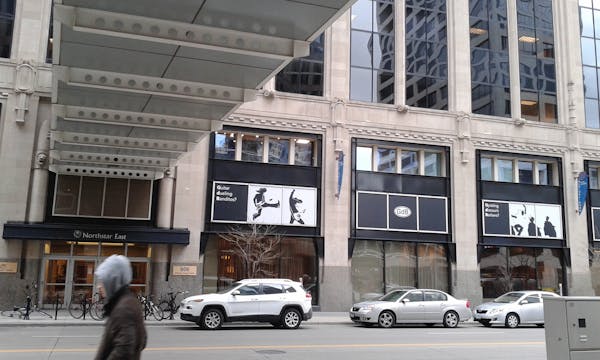Take a stroll west from Target Field, across N. 7th Street to Royalston Avenue, then on toward the Farmers Market in the Near North neighborhood of Minneapolis.
There won't be much to look at. The area today is a nondescript industrial zone occupied by brick and concrete-block buildings dating to the 1950s and later. But if you walk north to Olson Hwy., you'll find a short street called Oak Lake Avenue. It's the name of an intriguing residential neighborhood that once flourished here.
In its prime, the Oak Lake Park neighborhood was a showcase of Victorian residential architecture set amid parks, artificial ponds and winding, tree-lined streets. Its status as a middle-class retreat did not last long, however. It eventually came to be regarded as a blight and in need of demolition.
The neighborhood was platted in about 1872 by brothers Samuel and Harlow Gale, prominent real estate developers. With curving streets that defied the standard Minneapolis grid, Oak Lake Park was possibly the first example in the Twin Cities of a "tangletown," a neighborhood designed as a leafy residential enclave for middle-class residents. (Other examples of this type of genteel neighborhood, dating to the 1880s, include Prospect Park in Minneapolis and St. Anthony Park in St. Paul.)
The Oak Lake Park subdivision consisted of 60 acres and about 280 lots, most of them in the form of pie-shaped wedges to accommodate the winding streets. Aside from a small church and a few store buildings along Lyndale, the development was entirely residential.
The first houses in Oak Lake Park were built around 1874. During the next 15 years, the neighborhood filled with single-family houses, side-by-side duplexes and a handful of apartment buildings. All told, 200 or more housing units were built in the subdivision.
Although most of the single-family homes weren't quite mansion-sized, they offered all the architectural razzmatazz of the era in the usual farrago of styles. As a result, Oak Lake Park by 1890 may have contained the finest collection of middle-class Victorian homes ever assembled in Minneapolis.
Among the neighborhood's residents was pioneer Minneapolis architect LeRoy Buffington, whose surviving works include the Pillsbury A Mill (a National Historic Landmark now turned into loft apartments) and the splendid Pillsbury Hall on the University of Minnesota campus.
In about 1885 Buffington built a large, elusively styled house for himself at 83 Highland Av., a now-vanished street that wound through the heart of the neighborhood. The house featured an exceptionally broad front porch and must have been something of a showpiece. Unfortunately, few — if any — photographs show what Oak Lake Park looked like before it began to lose its cachet in the 1900s.
Prospect Park and St. Anthony Park are flourishing. So why did Oak Lake Park fall into decay and disappear?
The answer seems to come down to its location.
Oak Lake Park was close to downtown and noisy rail lines, the malodorous waters of Bassett Creek (before parts of it were channeled underground) and a good deal of industry, most notably the huge Munsingwear factory complex (now International Market Square) just across Lyndale. All of which made the neighborhood increasingly unattractive as an upscale residential community.
Eventually, the neighborhood went into a steep decline. By the 1920s, many of the big homes had been subdivided into apartments. The neighborhood's demographics also changed, as Jewish and Black families, many of whom were prevented from buying homes in other neighborhoods, began moving in.
By 1930, Oak Lake Park and nearby areas to the north formed the largest Black community in Minneapolis. The new residents weren't able to arrest the neighborhood's decline.
In 1936, the city of Minneapolis demolished the western half of Oak Lake Park, including Buffington's house and scores of others, to make way for a new city market (now the Minneapolis Farmers Market).
What was left of the neighborhood survived until the 1950s, when another round of urban renewal claimed the last of the houses, after which the streets were realigned to create large lots for industrial development. Although Royalston Avenue remains on the map, many of Oak Lake Park's original streets — Highland, Lakeside and Park Place — are gone.
Fifty years after Oak Lake Park's demise, 900 units of new housing were built near the old neighborhood. With its mix of contemporary apartments and single-family homes, the Heritage Park development looks much different from its Victorian predecessor, but it demonstrates how the powerful social, political and economic forces reshape cities like Minneapolis in a never-ending dance of destruction and renewal.
Larry Millett is an architecture critic and author. He can be reached at larrymillett.com.

Want to share info with the Star Tribune? How to do it securely

A Minnesota field guide to snow shovels: Which one's best?
Sign up for Star Tribune newsletters



